| Columns Retired Columns & Blogs |
Sonus Faber Guarneri Homage loudspeaker Measurements part 2
Examining the transient responses, the Guarneri's impulse response (fig.7) indicates a quick signature, the minor ringing due mainly to the grille. The infinite step response calculated from the impulse data reveals an out-of-phase relationship between high- and mid-frequency drivers, chosen by the designer to provide a well-integrated output over the designed listening window. The high-pass nature of the speaker's low-frequency response causes the step to decay to the zero line after several milliseconds—this is normal. The step's appearance was changed very little by the grille [presumably because the necessary mathematical integration of the data boosts the low frequencies at a 6dB/octave rate, thus minimizing the influence of high-frequency effects.—Ed.].
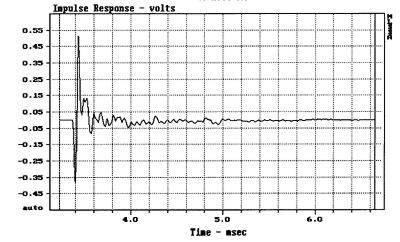
Fig.7 Sonus Faber Guarneri, impulse response on listening axis at 45" (3.5ms time window, 30kHz bandwidth).
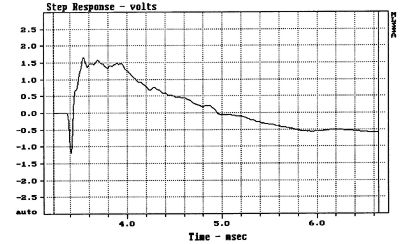
Fig.8 Sonus Faber Guarneri, step response on listening axis at 45" (3.5ms time window, 30kHz bandwidth).
Two results are given in fig.9 for the manner in which energy decays with time (the Energy-Time Curve, or ETC) for a 3ms range (3.4-6.6ms): the unwindowed characteristic in bold, the Blackman-Harris windowed data dotted. These were quite similar, the Guarneri's output decaying by 35dB in the first millisecond—a good result.
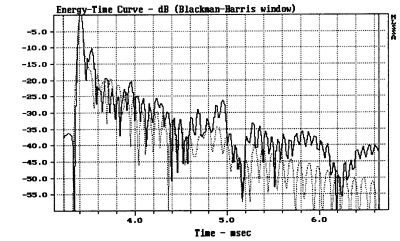
Fig.9 Sonus Faber Guarneri, Energy-Time Curves on listening axis at 45", unwindowed (solid), Blackman-Harris windowed (dotted).
The first waterfall plot (fig.10) is more sensitive to early decay problems, due to its fast 0.1ms filter risetime and an expanded scale of 5dB/vertical division. A minor dome resonance is evident at 16kHz, decaying quickly, while the large white area at the top of this graph suggests a very good performance. In practice, the treble sounded just fine. The second waterfall (fig.11) uses a 0.2ms risetime with greater resolving power in the frequency domain; the dynamic range now totals 60dB, 10dB/division. Though the 16kHz mode still makes its presence known, no other significant features are evident.
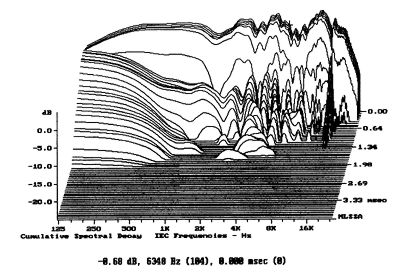
Fig.10 Sonus Faber Guarneri, cumulative spectral-decay plot at 45" (0.1ms risetime, 5dB/vertical div.).
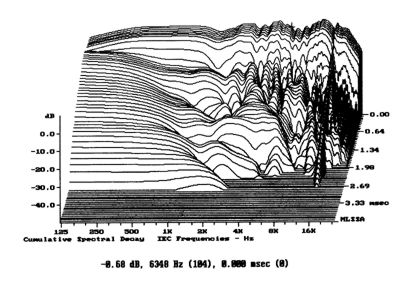
Fig.11 Sonus Faber Guarneri, cumulative spectral-decay plot at 45" (0.2ms risetime, 10dB/vertical div.).
Driven from both stereo positions and over the listening space, the resulting room-averaged 1/3-octave response (fig.12, top trace) was most presentable. That flat midrange is still evident, while the bass is smoothly extended to almost 40Hz. Even in-room, the Guarneri managed ±3.5dB from 45Hz-10kHz, while the rolloff in the top octave is as expected, given a 1" dome's theoretical directivity.

Fig.12 Sonus Faber Guarneri, room-averaged 1/3-octave response (top, solid, 5dB/vertical div.), electrical impedance magnitude (bottom, dashed, 2 ohms/vertical div.). Minimum value is 5.8 ohms at 260Hz.
At 1m on the reference axis (a few degrees below the midrange driver), the sensitivity was 86.5dB/W/m—a good result for a miniature speaker. This was not prejudiced by the impedance characteristic, and I got an average value of 8 ohms with a minimum value of 5.8 ohms (fig.12, lower trace). Many tube amps will be happy driving this load, as I found in the auditioning.
I applied various input powers to the Guarneri; it proved very capable in the mid- and treble ranges, the linear magnet and suspension systems keeping distortion down to 0.2% or better, even above 90dB spl. Below 100Hz, the system was working harder, with distortion above 2% below 70Hz, but this was of low order, and insignificant if judged subjectively. The Guarneri's power handling, like the Minima Amator's, was well above the average for its size, but you can't expect really high sound levels, especially in the bass. Nonetheless, it can play 6dB louder than a BBC LS3/5a, which will be enough for many applications. In a typical listening room, two Guarneris will raise 102dBA with 100W peak program (undistorted) per channel.—Martin Colloms
- Log in or register to post comments




































